Regional councils collect information about how much water is available and manage resource consents for those wishing to take water from rivers or groundwater supplies. Use the buttons below to view regional information on: how much water is available, where it comes from and how its used.
{{illustrationHeading}}
{{waterSource.groundwaterPercentAvailable}}% of total available Surface Water available: {{waterSource.surfacewater}}
{{waterSource.surfacewaterPercentAvailable}}% of total available Irrigation
{{waterUsage.irrigationLabel}} Industrial
{{waterUsage.industrialLabel}} Stock
{{waterUsage.stockLabel}} Hydroelectrical
{{waterUsage.hydroLabel}} Town supply
{{waterUsage.drinkingLabel}}
-
How much water is there in this region?
Rainfall and runoff in this region
Show HideRainfall and runoff
Relative Volume Source Volume Rainfall total:
{{waterAvailable.rainfall }}
 Rainfall Total
Rainfall Total
{{waterAvailable.rainfall}} Runoff total:
{{waterAvailable.runoff }}
 Runoff to sea
Runoff to sea
{{waterAvailable.runoff}} The table above shows the average amount of rainfall the region receives each year and how much of that flows out to sea. These are approximate figures only.
-
Water consents: where does water come from?
The split between surface water and groundwater
Show HideConsented water by source
Relative volumes Amount available to consent Surface water:
{{waterSource.surfacewater}}
available to consent Groundwater:
{{waterSource.groundwater}}
available to consentVolume consented Surface water:
{{surfaceWaterConsented()}}
volume consented Groundwater:
{{groundwaterConsented()}}
volume consentedSource Amount available to consent Volume consented Consented as a percentage of available 
 {{item.source}}
{{item.source}}
{{item.amountAvailable}} {{item.volumeConsented}} {{item.percentageConsented}} {{waterSource.total.source}} {{waterSource.total.amountAvailable}} {{waterSource.total.volumeConsented}} {{waterSource.total.percentageConsented}} The table above shows how much water is available to use compared with the amount that is actually consented for use. It also shows how much of this water is surface water and how much is groundwater.
Total groundwater allocation is calculated as Daily Max Volume over 100 days for irrigation takes and Max Daily Volume over 365 days for all other uses.
Total surface water available to allocate is underestimated as there are some sub-zones where there is there is little to no hydrological or ecological information to enable a limit to be defined. Although it appears there is plenty of surface water to go around it is important to talk to Horizons as it is not available everywhere.
-
Water consents: How is water used?
Consents by use in this region
Show HideAnnual consented water use by type
Overall annual volume for {{waterAvailable.year}}
Relative breakdown Activity Percentage of total consented Total volume Number of consents {{item.displayText}}
- - No data available {{item.breakdownPercentage}}% {{item.totalVolume}} {{item.numberOfConsents}} Total {{waterUsage.total.percentageConsented}}% {{waterUsage.total.totalVolume}} {{waterUsage.total.numberOfConsents}} The above table shows the proportion of water consented for irrigation, industrial, stock, town supply and other. It excludes hydro electricity. In this region/management zone {{hydroUsage.totalVolume}}/year is consented for hydro-electricity and makes up {{hydroUsage.percentageConsented}}% of the total water volume consented for this region/management zone
The water used for hydroelectricity generation in this region is considered to be some of the most valuable water in the country. On average an estimated 4,752,000 m³ per day is taken for hydroelectricity generation in this region. All of this water comes from surface water sources and more than half is exported to Waikato as part of the Tongariro Power Scheme. The remainder is used for smaller power schemes.

